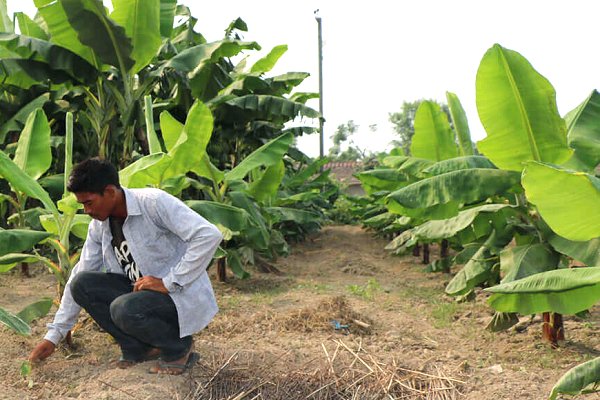
‘Nepal villages learn to cope with climate crisis’

(A longer version of this article and a video to accompany it appeared in the Nepali Times on 22 November; it is reproduced in edited form here with permission of the editor.)
Most research about climate impacts in the Himalayas deals with receding snowlines and retreating glaciers, but much less is known about how farmers are managing with too much – or too little – water in a changing climate.
Irregular monsoons and extreme rainfall have made floods more destructive in recent years, and the Tarai plain, where more than half of Nepalis live, is the worst-affected area.
Rivers here are changing course more frequently, submerging paddy fields and washing away homes.
Disastrous flood episodes since 2008 killed hundreds of people and caused colossal damage that is exacerbated by encroachment on flood plains and road embankments that blocks natural drainage channels.
“Unlike in the past, when we used to have gentle showers every other day during the monsoon, nowadays it does not rain for weeks and when it does it comes down in destructive torrents,” says Shuklaphanta municipality resident Bal Sugriv Rana.
He points above his head to indicate the level that water reached in the great flood 11 years ago that forced farmers to abandon the village.
‘This is a working model that
can be replicated in other parts
of the Tarai plain suffering flood risk’
Farmers have now returned to the village and are taking their own measures to reduce the threat of floods.
With support from Mercy Corps under its programme Managing Risk Through Economic Development as well as the Nepal Red Cross, farmers have reduced the risk by planting bamboo and napier grass on embankments and sugar cane on riverbanks.
Not only are they now better protected from floods, the new crops are earning them important income.
Mercy Corps [with the IFRC] is a member of the Zurich Flood Resilience Alliance, a global partnership which works to increase flood resilience throughout the world, including in Nepal.
Sugar cane is so resilient it can grow in sandy flood plains where its stem and roots can reduce water’s velocity and destructive force, and it can survive for up to ten days when flooding occurs.
“They said I was crazy when I planted sugar cane in the sand, but it has reduced the severity of floods, river banks are not barren anymore, and we earn money with relatively little investment from the sale of cane to the sugar factory,” explains Mangal Prasad Chaudhary of the Lalitpur village disaster management committee.
In the nearby village of Tikili, farmers also plant pumpkin, watermelon, banana, squash and gourd after floods recede – taking advantage of nutrients deposited by flood waters which adds to their income.
Research
This has discouraged open cattle grazing, which in turn helps the vegetation to grow back and provide an additional layer of protection from the floods.
Now that the river has been tamed by barriers of gabion walls, sugar cane, bamboo and elephant grass, the land is secure enough to plant paddy, vegetables and other cash crops.
“We earn an extra 50,000 rupees a year selling bananas, which has been quite helpful in running the household,” says Rajudevi Rana, 40, as she picks clusters of the ripening fruit from her family plot near the river.
“We did a lot of research to come up with the solution of combining flood-risk reduction with income generation,” explains Saroj Kumar Thakur of Mercy Corps Nepal in Kanchanpur.
“This is now a working model that can be replicated in other parts of the Tarai suffering flood risk.”
A farmer tending to his vegetable patch near the river, whose worst ravages are now held back by bamboo and napier grass planted on embankments and by sugar cane on river banks, in a programme supported by Mercy Corps and the Red Cross. (Photo: Nepali Times)